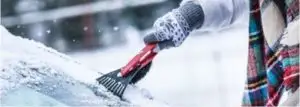How to’s and What If’s With Ceramic Window Film
Ceramic tint offers a number of benefits including strong heat rejection, UV protection, and increased visibility. It can also reduce the load on your AC system on hot days and help you save energy.
XPEL’s PRIME XR PLUS nano-ceramic film provides superior performance with higher clarity and color stability than dyed films. It also rejects 99% of harmful UV rays that cause skin cancer and premature aging.
What happens if my car window freezes with tint?
The window tinting process is a complex procedure that requires skill, practice and expertise. It begins with thoroughly cleaning the windows to remove any dirt or debris. Then, the window film is cut to size and its release liner is removed. It is then sprayed with an application solution to activate the adhesive. Once applied, it is pressed against the window using a squeegee. This helps to eliminate bubbles and creases in the film. Finally, the edges of the window tint are trimmed to ensure that it is perfectly flush with the glass.
to remove any dirt or debris. Then, the window film is cut to size and its release liner is removed. It is then sprayed with an application solution to activate the adhesive. Once applied, it is pressed against the window using a squeegee. This helps to eliminate bubbles and creases in the film. Finally, the edges of the window tint are trimmed to ensure that it is perfectly flush with the glass.
Window tints are available in a variety of levels of darkness. These are typically expressed as Visible Light Transmission (VLT) percentages. The lighter tints allow more light to pass through, while the darker tints offer more protection and privacy.
Besides being a beautiful addition to any car, ceramic tint also offers a variety of benefits such as heat rejection, UV protection and reduced glare. It is a great investment that will maintain the value of your vehicle, while protecting you and your passengers from robbery, accidents and sun exposure.
Answer 1: The window will freeze while the tint is still wet.
This premium tint uses nano-ceramic technology infused with IR (infrared) blocking materials to deliver superior heat rejection, clarity, and glare control. It also helps protect your vehicle’s interior from the sun’s harmful UV rays that can cause the upholstery and dashboard to fade over time.
This film is available in a variety of shades and colors, so you can customize the look to suit your personal style. It also offers privacy by making it harder for people to see into your car.
Before applying the tint, thoroughly clean the windows with a glass cleaner and a lint-free cloth. Then, apply the tint to the windows and smooth out any air bubbles using a squeegee. Finally, trim away any excess tint with a utility knife or razor blade for a clean finish. For best results, consult with athe professional installers at Alta Mere in Plano, Texas. They can ensure that your window tint is properly installed and provides maximum benefits. They can also help you choose the perfect shade for your vehicle.
Answer 2: The window will freeze while the tint is dry.
Before installing your ceramic tint, you’ll want to thoroughly clean the windows to remove any dirt, debris, or grime that might interfere with the application process. This will help ensure a flawless installation that produces long-lasting results. Be sure to use a glass cleaner designed specifically for tinted windows. Ammonia-based cleaners can degrade the film and cause it to discolor or develop a hazy appearance over time.
Ceramic window tints are designed with advanced spectrally selective technology that allows visible light to pass while blocking harmful UV rays and a significant portion of infrared heat. This enables the car interior to stay cool and reduces the need for excessive air conditioning usage, resulting in fuel efficiency savings.
Additionally, ceramic tints provide a level of privacy by obscuring what’s inside the vehicle. This can help deter people from breaking into or stealing your car and may also protect passengers from injury due to flying glass shards in the event of an accident.
Answer 3: The window will freeze while the tint is wet.
Ceramic IR window tint is an automotive window film that offers exceptional heat rejection and glare control. It also blocks 99% of cancer-causing UVA and UVB rays while filtering 96% of infrared heat. The best part is that this clear ceramic tint does not contain any metal or carbon, which makes it more scratch-resistant and durable than standard dyed films.
The reflective technology in ceramic tint reduces the buildup of heat and can improve your vehicle’s fuel efficiency by reducing air conditioning use. Additionally, it diminishes sun glare, which can cause eye strain and even lead to accidents on the road due to impaired driving ability.
Before applying the film, it is important to thoroughly clean your windows with a glass cleaner and lint-free cloth to remove any dirt or contaminants. Next, mist the cleaned window surface with a soapy water solution to act as a lubricant. Finally, remove the adhesive backing from one corner of the tint and place it on the window, making sure to leave a small margin for adjustments. Press out air bubbles and water from between the window and film with a squeegee.


One Response